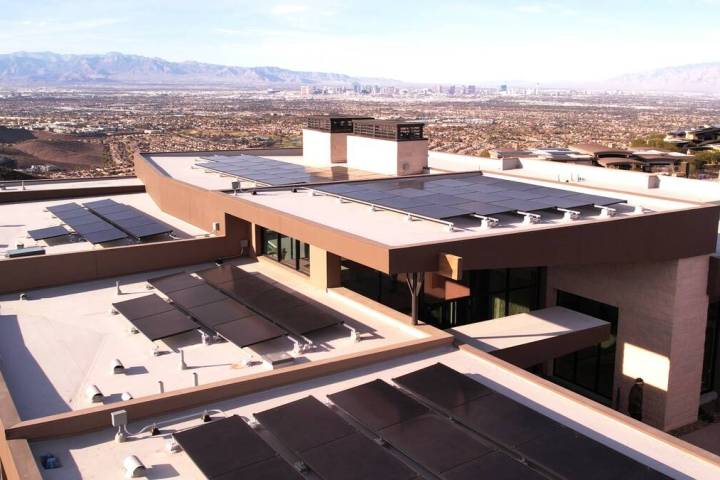Two of the Las Vegas region’s largest commercial real estate brokerages put out their first-quarter market reports April 9 in a bit of public relations one-upmanship.
But the reports by CBRE and Colliers International showed agreement in the conclusion that Las Vegas commercial property is staging a comeback led by industrial space.
Michael Newman, managing director of CBRE Las Vegas, pointed to the strongest industrial leasing activity since 2008 and attributed the gains to favorable supply and demand dynamics, He said he expects the speculative development market to be strong later this year and into 2016.
All industrial submarkets except the northwest had first-quarter gains. Across the market, net absorption increased from 470,192 square feet in the first quarter of 2014 to 1,341,052 square feet in first quarter 2015, a 185 percent increase, year-over-year. The vacancy rate stood at 6.34 percent, the lowest since second quarter 2008.
North Las Vegas accounted for about 50 percent of the total net absorption, followed by the southwest with about 34 percent. And two major speculative projects, by ProLogis and Dermody Properties, will add significant supply in North Las Vegas.
Warehouse buildings vacancy has been halved over the past five years and is now stimulating new construction, the Colliers report added. More than 8 million square feet of warehouse space, and nearly 10 million square feet of total commercial real estate, is now in some phase of development. This is the largest amount of product under development in Southern Nevada since before the Great Recession.
“After two years of recovery, Southern Nevada’s industrial market now appears to be back in growth mode,” said John Stater, research manager for Colliers International’s Las Vegas office.
Even the underwhelming office market saw some gains, Brad Peterson, a CBRE senior vice president, said. At 20.3 percent, the overall market vacancy dipped below 21 percent for the first time since first quarter 2009, after reaching a peak vacancy of more than 25 percent.
He’s optimistic that continuing job growth will decrease vacancies but cautioned that more development needs to occur. Demand is outpacing supply for large contiguous space used for call center or back office purposes, and a shortage of this type of produce may soon exist.
He said 486,209 square feet of the 591,151 under construction will be completed this year, led by Sansone Development’s renovation of the former Dillard’s space at the Boulevard Mall into more than 100,000 square feet of office space by this summer.
On the retail side, Matt Bear, vice president, brokerage services at CBRE’s Global Gaming Group Retail, expects rental rates will inch higher, tracking rising occupancy levels. However, rates for premier rental space will increase at a faster pace as competition intensifies for end caps and outparcel locations, he warned.
Retail vacancy continued its steady decline, going from 14.1 percent in 2011 to 10.1 percent in this year’s first quarter, representing a 28 percent decrease over the five-year period.
Speculative retail development remains restrained in Southern Nevada, which is positive, Colliers said. The market may have normalized, but vacancy remains elevated and the market still needs time to recover.
Construction activity is rebounding with several new retailers entering the Las Vegas market.
Colliers called attention to low vacancy rates among multifamily properties, which is stimulating new development. The Las Vegas Valley’s multifamily inventory is expected to increase by more than 1,500 units over the next 15 months.
In 2015’s first two months, multifamily sales volume was $27.1 million in 596 units, an average sales price of $45,500 per unit, Colliers reported.
Also, the land market, which was hit hard during the Great Recession, has rebounded after three weak years, Colliers said. Nearly 900 acres of land were sold in the first quarter of 2015, more than half of it for residential development. Prices for residential land decreased slightly, while prices for commercial land increased.
The Colliers report said the medical market’s positive net absorption in the first quarter was accompanied by stronger gross absorption, suggesting not only more activity, but a return to expansion for medical tenants.
And gains in the hospitality market were also called a positive sign.
“The strength of the Las Vegas hotel market mirrors the robust improvement the hospitality sector is enjoying nationwide,” said Mike Mixer, executive managing director of Colliers International Las Vegas. “Having hit a new visitor volume record in 2014, Las Vegas is now approaching peak levels for occupancy once again.”






